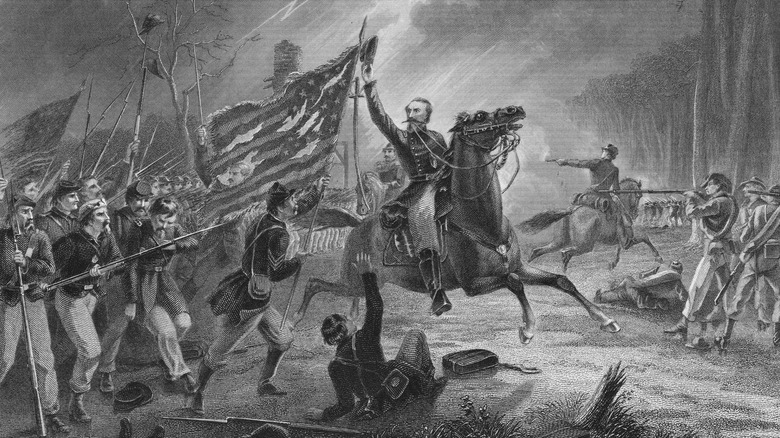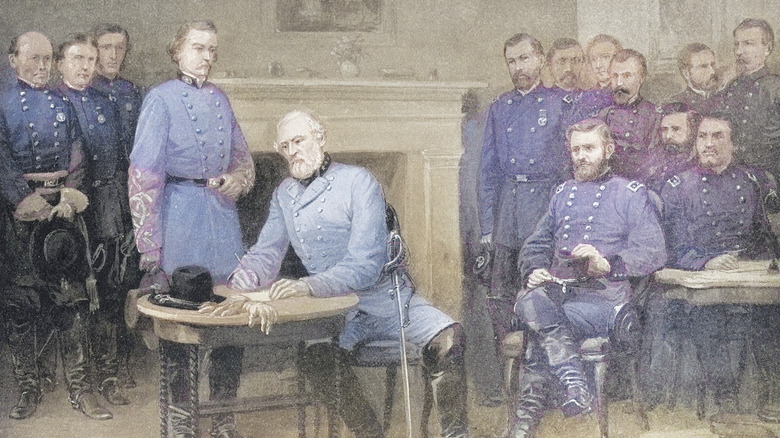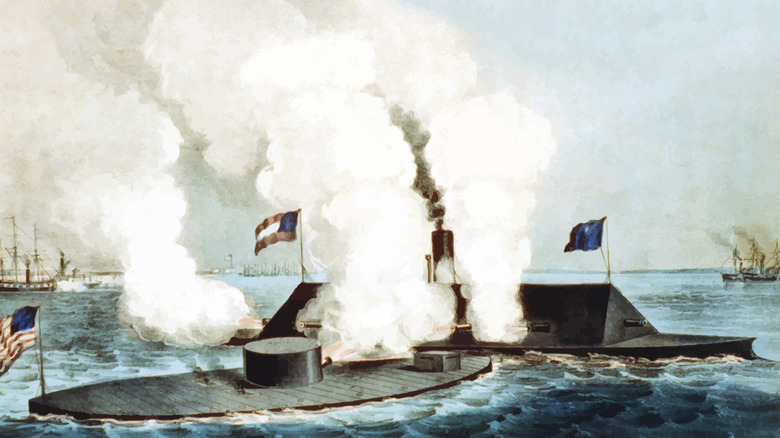The State With The Most Civil War Battles In History
The U.S. Civil War, which took place from 1861 to 1865, changed the face of the nation in profound ways, from the abolition of slavery to strengthening the federal government, but a very bloody price was paid to get there, with 620,000 — 2% of the population — dying in the conflict. Despite how far-ranging the war was, stretching from the Confederate raid in St. Albans, Vermont, to the Battle of Picacho Pass in Arizona, it was Virginia that saw the most action.
Virginia played a central role in the war for several reasons. Richmond was the capital of the Confederacy from May 1861 until the end of the war, and Washington, D.C., the Union capital, was only 100 miles away, just across the border from Virginia. The state played host to more than 2,000 battles, skirmishes, and other military engagements, including some of the war's bloodiest battles. There were 26 major battles in Virginia, with two bookending the war — the First Battle of Bull Run (Manassas) on July 21, 1861, and the Battle of Appomattox Court House on April 9, 1865, that spelled doom for the Confederacy.
Virginia saw 2 major battles that bookended the Civil War
With Richmond and Washington, D.C., so close to each other, it's no surprise that Virginia would become a prime target for the North to try to capture and the route taken by the Confederates to attempt to reach Washington. Among the most important Civil War battles fought in Virginia were the aforementioned Battle of Bull Run on July 21, 1861, which was the first major land battle of the war. The Rebels routed Union troops just 25 miles outside of Washington, D.C., who were attempting to take Richmond. The battle changed the attitude of many Northerners to the true nature of the war.
They realized it would be a long, bloody fight. They were correct, and Bull Run was just a foretaste, with nearly 3,000 Union troops either killed, wounded, missing, or captured. The Confederacy suffered nearly 2,000 casualties that day. Nearly four years later, Virginia was the scene of the Battle of Appomattox Court House, just west of Petersburg, that helped end the Civil War. On April 9, 1865 — a week after Richmond fell — Confederate Gen. Robert E. Lee was trapped by Union troops under Gen. Ulysses S. Grant and surrendered his Army of Northern Virginia. Besides these two key battles, Virginia was the scene of a range of different kinds of warfare and holds some shocking records.
Virginia saw a variety of warfare
Besides being the state with the most Civil War battles that stretched from the beginning to the end of the war, Virginia can also lay claim to some other historically important facts. The state saw two of the top-five bloodiest battles of the war, the Seven Days Battles and the Battle of Chancellorsville. The former took place near Richmond between June 25 and July 1, 1862. During the fighting, Gen. Robert E. Lee repelled Union troops under Gen. George B. McClellan, who were attempting to take the Confederate capital. It ended in 36,463 total casualties, making it the second bloodiest fighting of the war. Between April 30 and May 6, 1863, in Spotsylvania County, the Battle of Chancellorsville saw 29,609 casualties, including Confederate Lt. Gen. Thomas "Stonewall" Jackson, making it the fourth-deadliest battle of the war.
Virginia was also where a new form of naval warfare was launched when two ironclad warships fought it out at Hampton Roads on the James River. On March 9, 1862, the USS Monitor and the CSS Virginia (a revamped USS Merrimack) blasted away at each other for hours. These iron-reinforced steamships made history, but the battle ended in a stalemate. It wasn't until August 20, 1866, that President Andrew Johnson formally declared the end of the war. For Virginia, this meant picking up the pieces of its devastated land and population, but it also meant freedom for its enslaved people and reunification with the nation.


